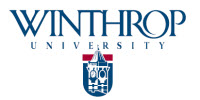Below is a summary of the abstract you submitted. Presenting author(s) is shown in bold.
If any changes need to be made, you can modify the abstract or change the authors.
You can also download a .docx version of this abstract.
If there are any problems, please email Dan at dar78@pitt.edu and he'll take care of them!
This abstract was last modified on April 1, 2025 at 1:44 p.m..

ExplosioNervosa is a bacteriophage that infects Mycobacterium smegmatis and was isolated by a Winthrop University SEA student in 2017. During the first two courses of the SEA Program (Discovery and Bioinformatics), ExplosioNervosa was characterized as a temperate A9 subcluster phage, coding for 96 putative genes. The next step of characterization was during the SEA-GENES course. As each gene began to be cloned, a region of ExplosioNervosa’s genome could not be amplified. It was determined that ExplosioNervosa was now a mutant population with a genome deletion of 3,614bp, coding for 11 genes. This fueled my investigations: to locate these deleted genes and analyze each one in an attempt to shed light on their function. Using a wild-type ExplosioNervosa lysate, each gene that was missing from the mutant population was successfully amplified. All 11 recovered genes were then cloned, assembled into pExTra, and sequence verified. Each phage gene then proceeded through a screening technique called a cytotoxicity assay, which provides a visual indication of interactions occurring between a phage gene product and its host’s proteome. Cytotoxicity is identified as a decrease in host growth as phage gene expression is induced. Two of ExplosioNervosa’s gene products, gp 80 and gp 81 displayed this effect on the host. To investigate further, each phage gene proceeded through a bacterial-2-hybrid (B2H) assay. The B2H assay uses two different plasmids (p2Hα and pCI) that code for fusion products. When induced, our phage gene (in p2Hα) is expressed as a product fused to the α subunit of RNA polymerase. pCI contains fragments of genes from the entire genome of the bacterial host M. smegmatis. When pCI is induced, individual host gene fragments are expressed as a product fused to the lambda CI repressor. A specially engineered reporter system uses carbenicillin resistance and the cleavage of X-gal to visualize blue colonies if the phage-host gene products interact. The plasmids were purified from these blue colonies, and the pCI plasmids were sequenced. Initial results identified ExplosioNervosa gp 80 interacting with the glutamate ABC transporter-substrate binding protein in M. smegmatis. These proteins are ATP-Binding Cassette (ABC) transporters and are involved in substrate transportation and drug/antibiotic efflux. ExplosioNervosa gp 81 interacted with an RNA-binding S4 domain-containing protein in M. smegmatis, which is predicted to be involved in RNA binding and the regulation of RNA translation. Using this interaction assay can highlight clues about the roles phage genes play as they interact with their host and can further our understanding of an ancient co-evolving relationship.

